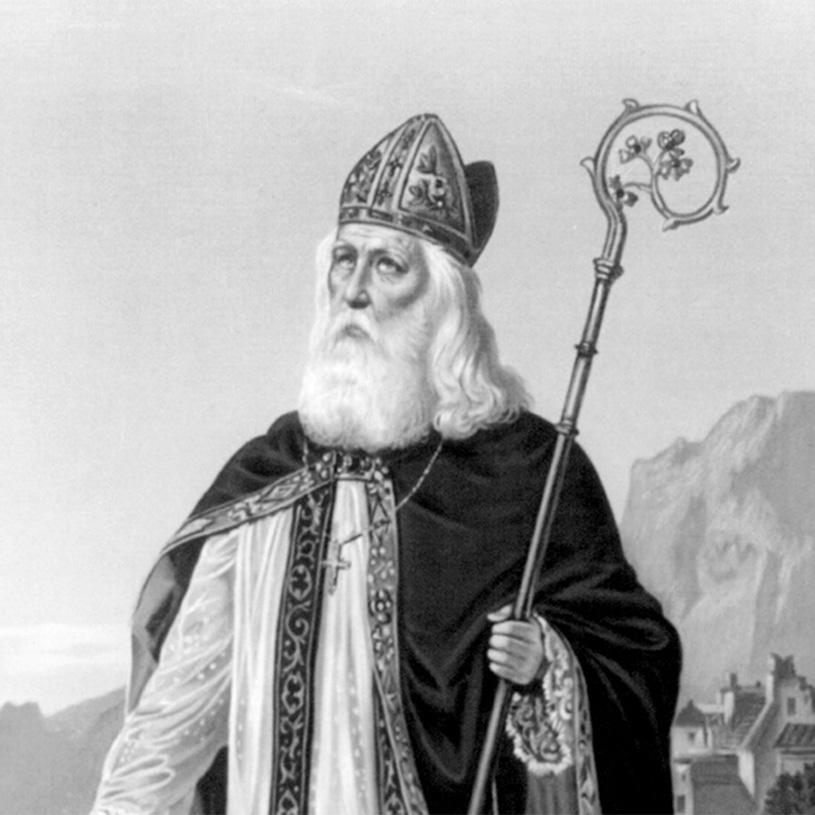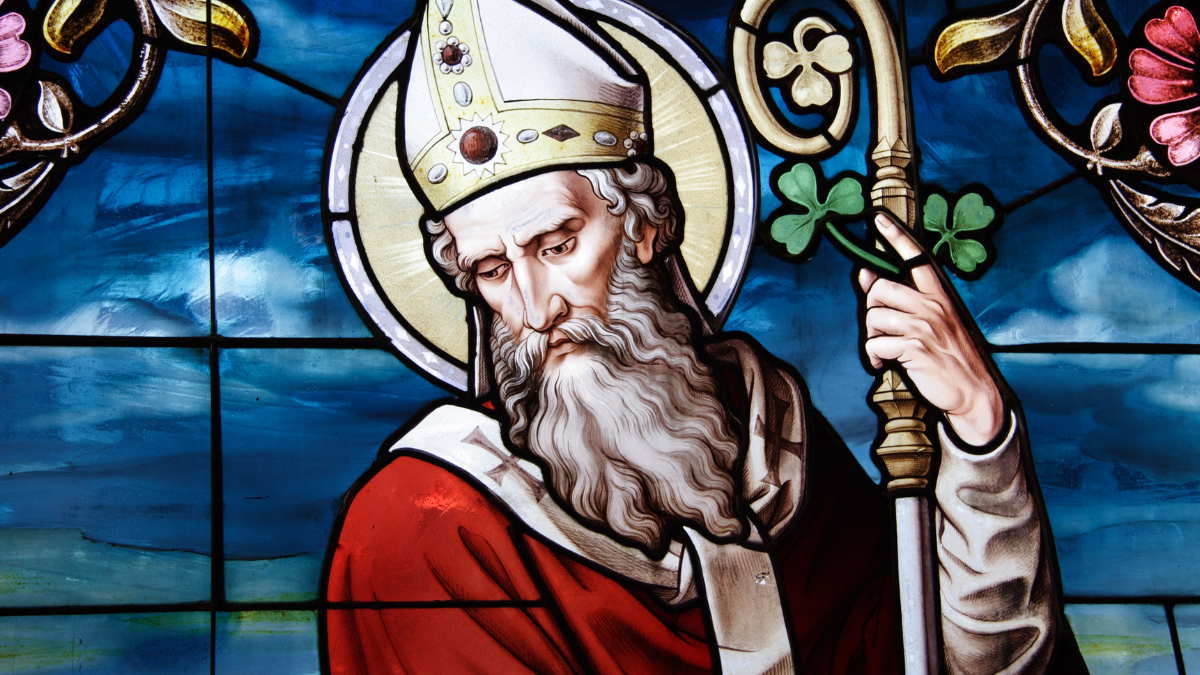*We highlight these Saints to inspire our students and contribute to their growth in Catholic education by fostering understanding and appreciation for Catholic values and teachings. We encourage parents to share the stories of these Saints with their children to deepen their spirituality and motivate them to live their faith with conviction, following the examples of these admired role models.*
St. Patrick was well known for being a leader in the movement of Christianity in Ireland, spreading the word of God to those who did not want to hear it. Despite the hardships he faced, St. Patrick listened to God’s call for his life to help others know God and to spread his kingdom on Earth!

Born and raised in Roman Britain in 387, St. Patrick (birth name Maewyn Succat) had a father who was a deacon, a mother who was related to St. Martin of Tours, and a grandfather who was a part of the clergy. Even with his family being so tightly knit in the Church, St. Patrick was not raised deeply in religion or education. In later years of his life, he admitted:
“I blush and fear exceedingly to reveal my own lack of education”
— St. Patrick
At age 16, St. Patrick was captured by Irish pirates and brought to Ireland as a slave. His enslavement lasted for 6 years. Despite the hardship, St. Patrick started praying every day to pass the time and found his desire to be close to God growing for the first time in his life. Not only did he feel this desire, but he also wanted to convert the Irish people he was enslaved by to Christianity.
One night, St. Patrick dreamed of escaping his enslavement, and the next morning he was able to convince some Irish sailors to let him on their ship. Somehow, he escaped, and found his way home to Britain. With his newfound freedom, St. Patrick began desperately studying the priesthood in France under St. Germanus.
St. Germanus, the bishop of Auxerre, ordained St. Patrick as a deacon in 418 and later as a priest. In 432, St. Patrick was ordained as a bishop by Pope Celestine I and sent to spread the gospel in Ireland.
St. Patrick was not welcomed in Ireland and faced resistance from the Irish people. He was nearly killed by a chieftain of a Druid tribe, but after the incident, he asked to meet the chieftain, forgave him, and successfully converted him and his tribe to Christianity. As his followers increased, St. Patrick started building churches, preaching, performing baptisms, establishing councils, founding monasteries, and writing various works.

St. Patrick’s writings included humble autobiographies like Confessio and Letter to Coroticus, and his memoir The Confession. In The Confession, he wrote:
“The love of God and his fear grew in me more and more, as did the faith, and my soul was rosed, so that, in a single day, I have said as many as a hundred prayers and in the night, nearly the same. I prayed in the woods and on the mountain, even before dawn. I felt no hurt from the snow or ice or rain.”
— St. Patrick
From his writings, we can see how deeply St. Patrick loved the Lord. He wanted to spread the gospel throughout Ireland, and it was clear he was the right man to become bishop of the nation of Ireland. He took on his role as bishop in a nation that hated him and had done him wrong in his past. He never doubted that God wasn’t with him.
After serving the country of Ireland for the rest of his life, St. Patrick died on March 17th, 461, a day many of us know as Saint Patrick’s Day. While on this day we celebrate by wearing green and having parties, his legacy is what the day is all about. He was talked about in Ireland as the man who drove out the snakes in the country (both literally and figuratively), as well as introducing the Holy Trinity through the image of a three-leaved shamrock (the three-leaf clover) ☘️. St. Patrick was never formally canonized in the Catholic Church, but this was a common practice with saints before the 10th century.
Even after his enslavement, St. Patrick was fully devoted to and trusted in God. He had every reason to turn away from Him, but remained a loyal servant. St. Patrick was humble and brave; he never feared death. He became a leader in Christianity, and helped build the foundation of Catholicism by spreading Christianity.
FAMILY ACTIVITY: A great way to honor St. Patrick outside of usual St. Patrick’s Day celebrations is to pray St. Patrick’s Breastplate as a family. This is a powerful prayer written by St. Patrick himself. You likely know a few lines from it already!
